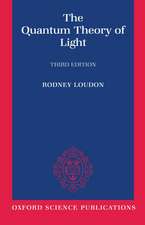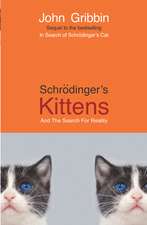The Optical Aurora: Physics and Chemistry in Space, cartea 4
Autor A. Omholten Limba Engleză Paperback – 27 feb 2012
Din seria Physics and Chemistry in Space
-
 Preț: 385.84 lei
Preț: 385.84 lei -
 Preț: 382.18 lei
Preț: 382.18 lei - 15%
 Preț: 643.84 lei
Preț: 643.84 lei -
 Preț: 383.50 lei
Preț: 383.50 lei - 18%
 Preț: 729.84 lei
Preț: 729.84 lei - 15%
 Preț: 642.83 lei
Preț: 642.83 lei - 15%
 Preț: 637.59 lei
Preț: 637.59 lei -
 Preț: 385.08 lei
Preț: 385.08 lei -
 Preț: 381.98 lei
Preț: 381.98 lei -
 Preț: 381.43 lei
Preț: 381.43 lei - 15%
 Preț: 637.78 lei
Preț: 637.78 lei - 15%
 Preț: 634.49 lei
Preț: 634.49 lei -
 Preț: 388.34 lei
Preț: 388.34 lei -
 Preț: 392.21 lei
Preț: 392.21 lei - 15%
 Preț: 697.47 lei
Preț: 697.47 lei -
 Preț: 382.18 lei
Preț: 382.18 lei - 15%
 Preț: 643.84 lei
Preț: 643.84 lei - 15%
 Preț: 638.43 lei
Preț: 638.43 lei -
 Preț: 385.08 lei
Preț: 385.08 lei -
 Preț: 385.08 lei
Preț: 385.08 lei - 18%
 Preț: 778.32 lei
Preț: 778.32 lei - 18%
 Preț: 777.83 lei
Preț: 777.83 lei -
 Preț: 381.81 lei
Preț: 381.81 lei
Preț: 383.50 lei
Nou
Puncte Express: 575
Preț estimativ în valută:
73.38€ • 76.81$ • 61.08£
73.38€ • 76.81$ • 61.08£
Carte tipărită la comandă
Livrare economică 31 martie-14 aprilie
Preluare comenzi: 021 569.72.76
Specificații
ISBN-13: 9783642462719
ISBN-10: 3642462715
Pagini: 216
Ilustrații: XIV, 200 p.
Dimensiuni: 155 x 235 x 11 mm
Greutate: 0.31 kg
Ediția:Softcover reprint of the original 1st ed. 1971
Editura: Springer Berlin, Heidelberg
Colecția Springer
Seria Physics and Chemistry in Space
Locul publicării:Berlin, Heidelberg, Germany
ISBN-10: 3642462715
Pagini: 216
Ilustrații: XIV, 200 p.
Dimensiuni: 155 x 235 x 11 mm
Greutate: 0.31 kg
Ediția:Softcover reprint of the original 1st ed. 1971
Editura: Springer Berlin, Heidelberg
Colecția Springer
Seria Physics and Chemistry in Space
Locul publicării:Berlin, Heidelberg, Germany
Public țintă
ResearchCuprins
1 The Occurrence and Cause of Auroras: a Short Introduction.- 1.1 Local Auroral Forms.- 1.2 Auroral Morphology.- 1.3 Particle Behaviour: Reflection, Absorption and Scattering.- References.- 2 The Electron Aurora: Main Characteristics and Luminosity.- 2.1 Introduction.- 2.2 N2+ Emission and Ionization.- 2.3 Theoretical Height Distribution of the First Negative N2+ Bands.- 2.4 Height Distribution of Other Emissions.- 2.5 Electron Energies Inferred from Height Distribution of Auroral Luminosity.- 2.6 Geometry and Motion of the Electron Aurora.- 2.7 Latitude Variations in Auroral Heights.- References.- 3 The Proton Aurora.- 3.1 Introduction.- 3.2 Theory of Hydrogen Line Emission.- 3.3 Observations on Hydrogen Lines.- References.- 4 The Optical Spectrum of Aurora.- 4.1 Description.- 4.2 Local Variations in the Spectrum.- 4.3 Latitudinal and Zonal Variations.- References.- 5 Physics of the Optical Emissions.- 5.1 Excitation.- 5.2 Deactivation.- 5.3 Interpretation of the Spectrum.- 5.4 The Lifetime of Metastable Oxygen Atoms.- 5.5 Helium Emissions.- 5.6 Sunlit Aurora.- Appendix (References to Data on Cross-Sections).- References.- 6 Temperature Determinations from Auroral Emissions.- 6.1 Introduction.- 6.2 Doppler Temperatures.- 6.3 Rotational Temperatures.- 6.4 Conclusions and Prospects.- References.- 7 Pulsing Aurora.- 7.1 Introduction.- 7.2 Pulsating Aurora.- 7.3 Flaming Aurora.- 7.4 Flickering Aurora.- 7.5 Streaming Aurora and Horizontal Waves.- 7.6 Correlation with Pulsations in the Magnetic Field and Telluric Currents.- 7.7 Correlation with Pulsations in X-Rays.- 7.8 Morphology of Pulsating Aurora.- References.- 8 Optical Aurora and Radio Observations.- 8.1 Introduction.- 8.2 Radio Absorption.- 8.3 E-Layer Ionization.- 8.4 Radio Auroras.- 8.5 VLF Radio Emissions and Radio Noise.- 8.6 Polar Cap Absorption (PCA) Events.- References.- 9 Auroral X-Rays.- 9.1 Production of X-Rays in Aurora.- 9.2 Observations.- References.














